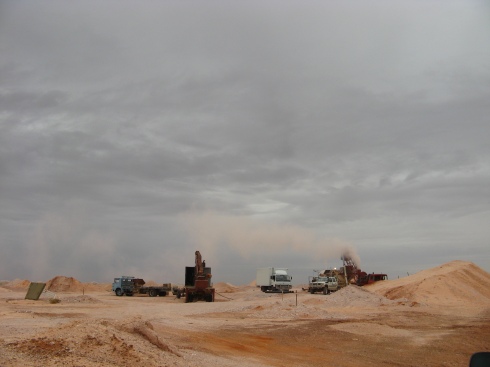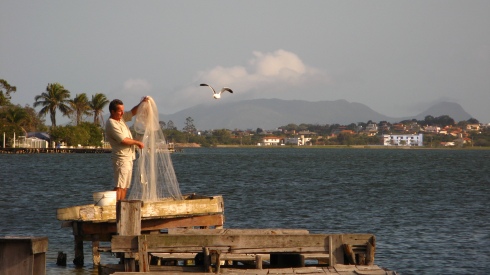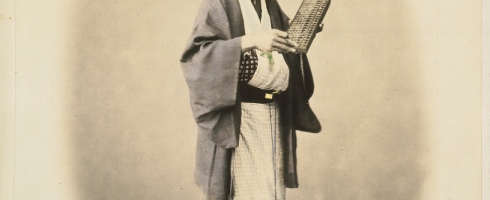This is a piece of mine just published in Financial Director, a monthly magazine for British finance directors and chief financial officers that I used to edit a few years before going freelance. A few of the big business consultancies are saying that the time is right for British businesses to stop sending their manufacturing work to China and use companies at home- but the evidence that British businesses agree is not compelling. There are, though, a few small-scale operations that are making it work. Read about them below.

The British economy is beset by persistent structural problems. We haven’t been a manufacturing power for generations because we’re a ‘knowledge economy’. It’s more profitable to sell land to a foreign investor than to stick a factory on it and make things. So why is ‘re-shoring’ – the practice by which British businesses stop outsourcing production of some or all of their goods and services to China and other historically low-cost, high-volume countries, and bring it home to employ, innovate and build at home – being pitched as a good thing to do?
With the inception of minimum wage law and the emergence of highly-skilled, better protected, educated workforces in some Asian countries, manufacturing in that region has become almost as expensive as it is at home. Yet the operational risks unique to doing so remain. At home, labour is cheap because it is unskilled. The tide has gone out on the labour cost advantage that Asia has offered.
So re-shoring is a pragmatic choice. “For us, it was quite simply a matter of cost,” Eben Upton, a founder and now chief executive of the Raspberry Pi Foundation, which makes and sells the ubiquitous low-cost computer. The Raspberry Pi Foundation transferred production to Sony’s South Wales factory in 2012 through its partner, Premier Farnell.
“While we were satisfied with the quality level of our original Chinese contract electronic manufacturer and their factory-gate cost, we were able to reduce the UK landed cost of our product through re-shoring. Subsequent cost optimisation – easier without a language barrier and physical distance – has delivered further savings,” Upton tellsFinancial Director. “We build in the UK because it’s cheaper than the alternatives.”
According to Big Four accounting firm EY, which published a study of re-shoring earlier this year, about half the manufacturing businesses in the UK have actively re-shored part of their operations or have been considering doing so. The government has established its own advisory, Reshore UK, to guide small to medium-sized businesses (SMEs) on the process of re-shoring.
The tide has gone out on the labour cost advantage that Asia has offered
However, Civitas, the think-tank, found in its 2014 study that only 64 British SMEs of some 49,000 observed had undertaken re-shoring. The study concludes that “only a tiny part of current production in China will be returned to the UK during the next five to ten years”.
Yet, Civitas lays out several frightening examples of problems British companies have had when giving manufacturing contracts to Chinese companies that would give any FD reason to re-shore. These range from manufacturers ignoring specific instructions on how to produce a product, delivering it months late and with faulty parts, using counterfeit materials in high-spec products, even factories running two production lines – one for the contracted manufactures and another for illicit copies, with nothing but a curtain separating them for the benefit of their visiting clients.
Meanwhile, the language barrier and distances involved in visiting factories add cost and complexity to their supply chains that slow down everything. Re-shoring requires careful planning if it is to bring the financial benefits you want. And it can go wrong. When Magmatic, maker of the famous Trunki children’s wheeled suitcase, moved all its production to a British manufacturer, Inject Plastics, in 2012, it was forced to buy the company six months later to keep the whole project afloat. Inject had cash-flow issues that resulted in the withdrawal of bank finance.
The move to buy Inject became pivotal to making re-shoring work: on closer inspection, it wasn’t equipped to do the job. “When we acquired Inject, we had a good look at what it needed and, yes, it did need further investment – in equipment and the organisational structure,” says Andy Jones, finance and operations director at Magmatic.
“Whether this turns out to be expensive will depend on the value we can continue to create. If we just saw a UK facility as cranking out a standard product at volume then it’s likely offshore operations could do it cheaper. We gave some thought as to how it could offer us a point of difference over our competitors.”
Raspberry Pi and Premier Farnell collaborated for some months on finding costs that could be removed from the manufacturing process, so that the re-shored operation had many more automated steps and needed fewer humans. Adding two holes to the circuit board greatly improved automation and allows faster response to spikes in demand.

Tim Lawrence, a manufacturing expert at PA Consulting, says FDs with whom he has spoken about re-shoring usually prioritise this ability in their considerations.
“Those FDs we have spoken to are interested in the ability to respond to customers’ demands more quickly and to hold less inventory,” he tells Financial Director.
At Trunki and Raspberry Pi, a vital benefit had to be the ability to bring research and innovation teams physically closer to production, to respond to the increasing thirst customers have for customisation and evolving design or capabilities of products. Manufacturing in Asia was simply too cumbersome. Re-shoring made it cheaper to chop and change designs, functionality and to release upgrades and new designs faster.
Magmatic’s Andy Jones says that buying Inject Plastics (now called Magma Moulding) gave the business a readily available, fully controllable and flexible resource that has created new business. “The inputs you need for successful innovation can vary greatly; it’s difficult to predict exactly what you’ll need and for how long. We’ve found that parts of our process lead us in directions we’d not fully considered at the outset,” says Jones.
“Having this access to our quality people has paid dividends in delivering brand new products – like our Trunki case with ‘in-mould’ labels, around which the case is actually moulded so you get no join lines. This has allowed our design team to be more creative with their artwork.”
Jones says there are no other case manufacturers that can in-mould labels onto a case surface which curves over numerous plains, making this a unique selling point it can offer its clients. “We can now make up to 1,000 Trunki cases a day, but we restrict it to about 600 to remain flexible and responsive if we get a sharp fluctuation in demand,” he adds. “Being able to develop new case decoration processes in the UK has helped differentiate us from the copycats. And the factory also acts as our warehouse, which saves us a lot of money on storage and gives us better control over our customer service.”
Those FDs we have spoken to are interested in the ability to respond to customers’ demands more quickly and to hold less inventory
Tim Lawrence, PA Consulting
But little has changed in Britain’s ability to provide skilled technicians and craftspeople, a linchpin element of the re-shoring proposition as painted by advisers such as EY. It posits a government policy of lowering employers’ national insurance contributions, especially for under-25s, to exploit the pool of young unskilled people for the purposes of promoting re-shoring.
However, re-shoring is more likely to be predicated on more automation, rather than more hands, as in the case of Raspberry Pi.
“The key issue in any migration project is retaining and transferring the necessary knowledge that can be difficult to capture and document. In the case of re-shoring, it applies especially when that knowledge, after a long period of offshore activity, has completely been lost in the country of origin,” says PA Consulting’s David Vasak.
With emerging technologies – such as 3D printing and global machine-to-machine connectivity on the internet of things – “a new industrial era is emerging. The way value is created in manufacturing will completely change,” he says.
“Productivity will be based on complex technology and a ‘knowledge workforce’ supporting flexible, highly automated value chains. These will project customer wishes through product development and production to a network of suppliers. Cheap labour won’t drive productivity anymore; here, we see great potential for the UK.”
It remains to be seen how many businesses are prepared to make those complex and fundamental changes to their model in order to benefit from the re-shoring idea.



















